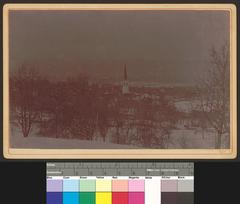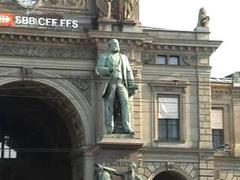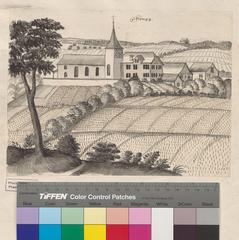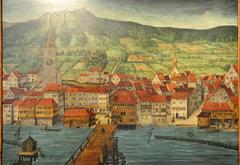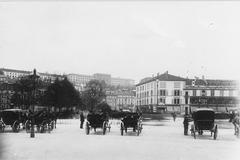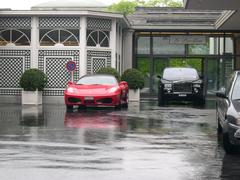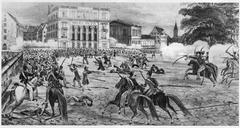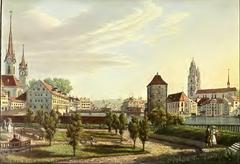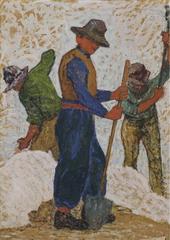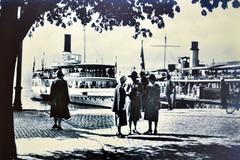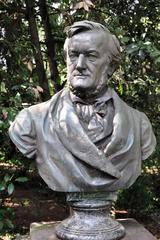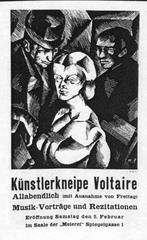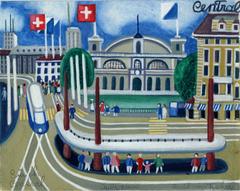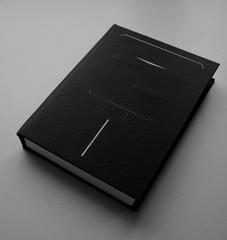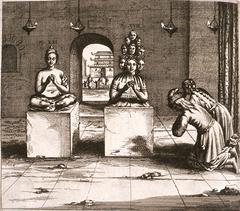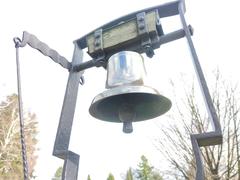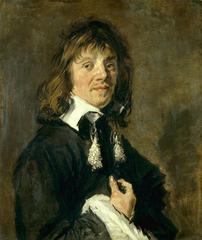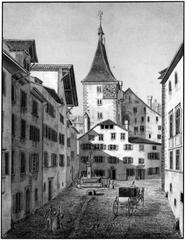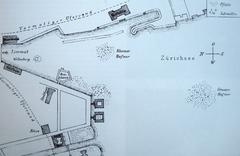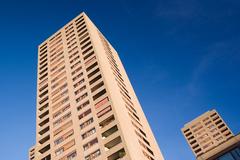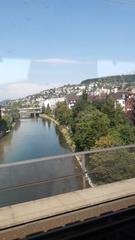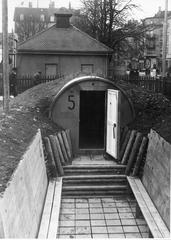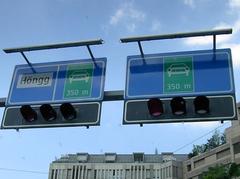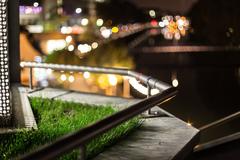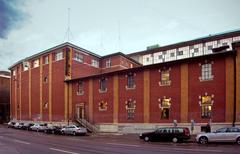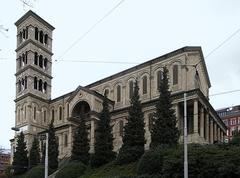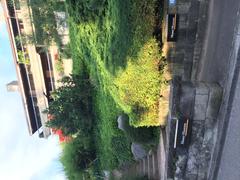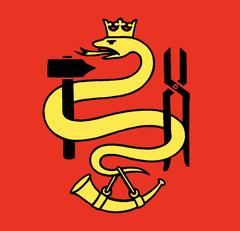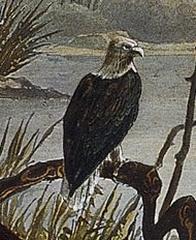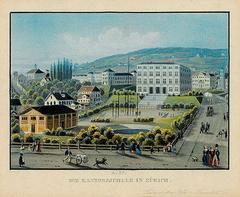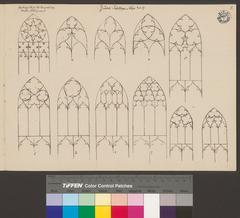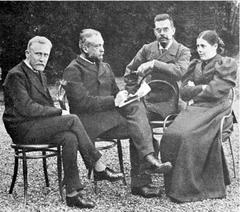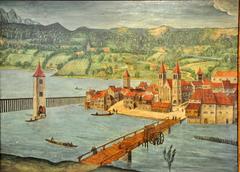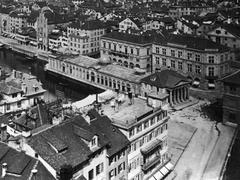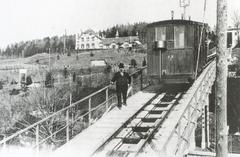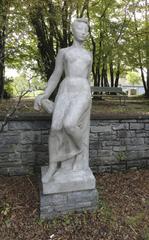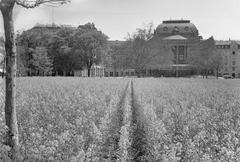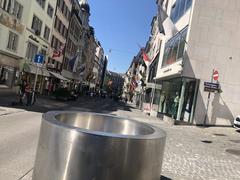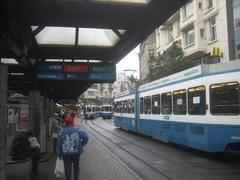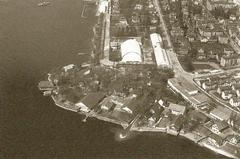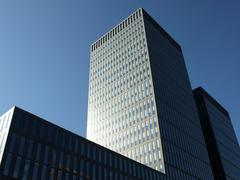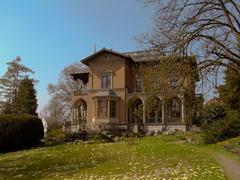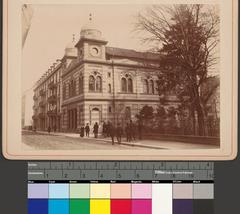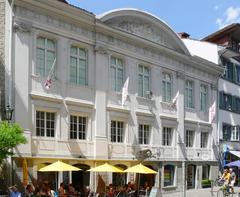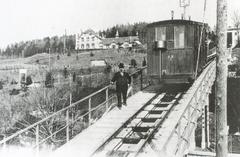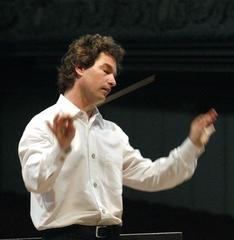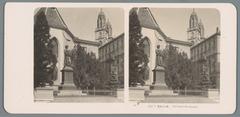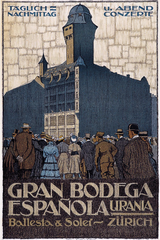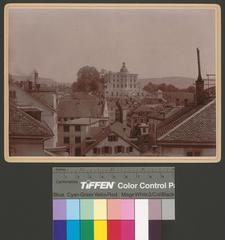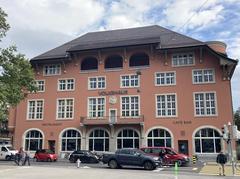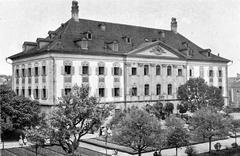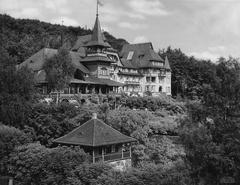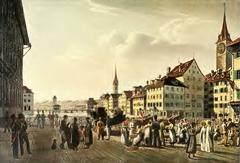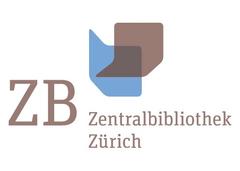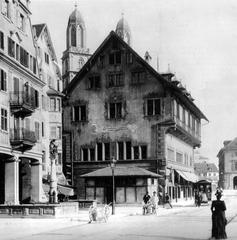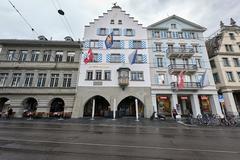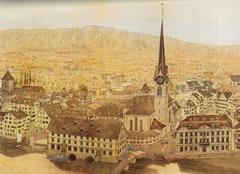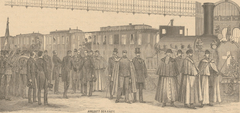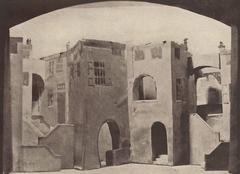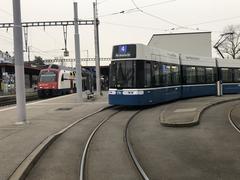Regionalwache City Visiting Guide: Hours, Tickets, and Historical Insights
Date: 31/07/2024
Introduction
Zurich, Switzerland’s largest city, is a captivating blend of historical depth and modern vibrancy. With roots tracing back to Roman times and evidence of human activity spanning over 6,400 years, Zurich is a city teeming with rich history and cultural significance. At the heart of this historical fabric lies the Regionalwache City, a modern police station that not only serves as a vital community service hub but also stands as a testament to Zurich’s continuous evolution through the ages. From its medieval guilds and Reformation heritage to its status as a global financial powerhouse, Zurich offers a plethora of attractions that cater to diverse interests. This guide aims to provide a comprehensive overview of Zurich’s historical and cultural landmarks, key visitor information, and practical tips to make the most of your visit (source, source).
Table of Contents
- Introduction
- Early History and Development
- Medieval Zurich and the Guilds
- The Reformation and Economic Growth
- Industrialization and Modernization
- 20th Century and Beyond
- Regionalwache City: A Modern Landmark
- Cultural and Historical Significance
- FAQ
- Conclusion
Exploring Regionalwache City: Visiting Hours, Tickets, and Historical Significance in Zurich
Early History and Development
Zurich’s origins trace back to Roman times when it was known as Turicum. With archaeological evidence of human activity dating back over 6,400 years, Zurich’s historical significance is profound. By the Middle Ages, Zurich had gained privileged status as an Imperial free city in 1218.
Medieval Zurich and the Guilds
The 14th century marked Zurich’s entry into the Swiss Confederacy in 1351. The Zunftordnung (guild laws) established in 1336 by Rudolf Brun, the city’s first independent mayor, were pivotal. This period saw the construction of city walls and the emergence of stone houses on the Rennweg.
The Reformation and Economic Growth
The 16th century brought the Protestant Reformation, led by Huldrych Zwingli, transforming Zurich into a major Reformation center. Economic growth followed, particularly in the silk industry, bringing wealth to the city.
Industrialization and Modernization
The 19th century witnessed rapid industrialization. The Spanisch-Brötli-Bahn railway, connecting Zurich with Baden in 1847, and the construction of the Quaianlagen and new lakefront transformed Zurich into a modern city.
20th Century and Beyond
In the 20th century, Zurich continued to grow, becoming a center for banking and finance. Despite being accidentally bombed in WWII, it remained neutral and provided refuge for persecuted Jews. The city’s liberal laws in the 1990s fostered a vibrant nightlife and significant gentrification.
Regionalwache City: A Modern Landmark
The Regionalwache City is a modern police station located in Zurich’s heart, offering essential services such as handling lost identification documents and simple reports. It is accessible to physically impaired individuals via wheelchair ramps.
Visiting Hours and Tickets
- Visiting Hours: Monday to Saturday from 07:00 to 18:00. Closed on Sundays and public holidays.
- Tickets: No tickets are required for visiting the Regionalwache City.
- Emergency Contact: Dial 117 in emergencies.
Visitor Tips and Practical Information
- Accessibility: The station is wheelchair accessible.
- Management: Operative leader Rolf Raymann and district chiefs Jan Van’t Veer, Patrick Bühler, and Domenico Ceroli oversee the station.
- Nearby Attractions: Explore nearby Zurich historical sites like the Grossmünster and the Swiss National Museum.
- Photographic Spots: Capture the essence of Zurich at the Quaianlagen lakefront.
Cultural and Historical Significance
The Regionalwache City symbolizes Zurich’s commitment to public safety and community service. Its central location makes it a key landmark for residents and tourists alike, playing an integral role in the city’s daily life.
FAQ
Q: What are the visiting hours for Regionalwache City? A: Monday to Saturday from 07:00 to 18:00. Closed on Sundays and public holidays.
Q: Is the station accessible to physically impaired individuals? A: Yes, it is equipped with wheelchair ramps.
Q: Are there any tickets required to visit the Regionalwache City? A: No tickets are needed for visiting.
Q: What emergency number should be dialed in Zurich? A: Dial 117 in case of emergencies.
Top Historical and Cultural Sites in Regionalwache City, Zürich: Visiting Hours, Tickets, and More
Introduction
Welcome to Regionalwache City in Zürich, Switzerland! This city is brimming with historical landmarks, cultural institutions, and scenic spots that cater to a wide array of interests. Whether you’re a history enthusiast, an art lover, or simply looking to explore the picturesque beauty of Zürich, this guide will help you uncover the top attractions, complete with visiting hours, ticket information, and more.
Grossmünster
The Grossmünster is one of Zürich’s most iconic landmarks. This Protestant church, located in the old town, is renowned for its twin towers that dominate the city skyline. The church is open daily from 10 am to 6 pm, with reduced hours from November to February. Visitors can climb the towers for a panoramic view of Zürich, which is particularly breathtaking at sunset. The Grossmünster also holds significant historical importance as the starting point of the Swiss-German Reformation led by Huldrych Zwingli in the 16th century. More details can be found here.
Fraumünster
Another must-visit church in Zürich is the Fraumünster, famous for its stunning stained-glass windows designed by Marc Chagall in 1970. The church offers audio-guided tours that provide insights into its rich history and architectural features. The Fraumünster is located near the Limmat River, making it a convenient stop while exploring the old town. For more information, visit this link.
Kunsthaus Zürich
Art enthusiasts should not miss the Kunsthaus Zürich, which houses an impressive collection of over 4,000 artworks ranging from the Middle Ages to contemporary pieces. The museum features works by renowned artists such as Claude Monet, Edvard Munch, Vincent Van Gogh, Pablo Picasso, and Swiss artist Alberto Giacometti. The Kunsthaus Zürich is a cultural treasure trove that offers a deep dive into the world of art. Updated hours and pricing can be found here.
Swiss National Museum
The Swiss National Museum, also known as Landesmuseum Zürich, is a must-visit for history buffs. The museum’s exhibits cover Switzerland’s history from prehistoric times through the Middle Ages to the 20th century. Highlights include gothic art, carved altars, and medieval coins. The museum is located near the central train station, making it easily accessible for tourists. More details are available here.
Bahnhofstrasse
For those interested in shopping, Bahnhofstrasse is one of the world’s most exclusive shopping streets. Home to luxury brands like Dior, Chanel, Louis Vuitton, Hermès, and Prada, this street stretches from the central train station (Hauptbahnhof) to Lake Zürich. Even if shopping is not on your agenda, a stroll down Bahnhofstrasse offers a glimpse into Zürich’s affluent lifestyle. More information can be found here.
Lake Zürich
Lake Zürich is a central feature of the city, offering a variety of recreational activities. Visitors can take a boat cruise to enjoy the scenic beauty of the lake and its surroundings. Alternatively, the promenade along the lake is perfect for a leisurely walk or a picnic. The lake is also a hub for water sports such as wakeboarding, swimming, and surfing. For more details on cruising options, visit this link.
Uetliberg Mountain
Uetliberg Mountain provides a fantastic viewpoint over Zürich. Although it is more of a large hill than a mountain, the view from the top is worth the trip. Visitors can reach Uetliberg by taking a train from Zürich, followed by a short uphill walk. The viewpoint offers a panoramic view of the city and the surrounding landscape, making it a popular spot for hiking and photography. More information can be found here.
Zürich Old Town
The old town of Zürich, known as Altstadt, is a historical and cultural hub. It is bordered by the central train station in the north and Lake Zürich in the south. The area is filled with narrow, winding streets, medieval buildings, and significant landmarks such as the Grossmünster and Fraumünster churches. The district of Niederdorf, located within the old town, is famous for its vibrant nightlife, shops, and restaurants. Visitors can spend several hours exploring the old town at a leisurely pace. More details are available here.
FIFA World Football Museum
Football fans should not miss the FIFA World Football Museum, which offers an interactive journey through the history of football. The museum features exhibits, short films, and interactive displays that celebrate the sport’s global impact. Located outside the old town, the museum is accessible by a 20-minute walk or a short tram ride. Updated hours and pricing can be found here.
Lindenhof Hill
Lindenhof Hill is a historical site that offers a beautiful view over Zürich. It is an ideal spot for a picnic, with plenty of seating areas and a serene atmosphere. The hill has historical significance as the site of a Roman castle and later a Carolingian Kaiserpfalz. Today, it is a peaceful retreat in the heart of the city, perfect for relaxing and enjoying the view. More information can be found here.
Lindt Home of Chocolate
For chocolate lovers, the Lindt Home of Chocolate is a must-visit. Located just outside Zürich, this attraction offers a comprehensive tour of the chocolate-making process, from cocoa bean to finished product. Visitors can enjoy interactive exhibits, a chocolate fountain, and, of course, plenty of tasting opportunities. The Lindt Home of Chocolate is a delightful experience for both adults and children. More details are available here.
Zürich Opera House
The Zürich Opera House is a cultural landmark that hosts a variety of performances, including opera, ballet, and concerts. The building itself is an architectural gem, with a rich history dating back to its opening in 1891. Attending a performance at the Zürich Opera House is a memorable experience that offers a glimpse into the city’s vibrant cultural scene. More information can be found here.
Casino Zürich
For those looking to experience Zürich’s nightlife, Casino Zürich offers a range of gaming options, including poker, blackjack, and roulette. The casino also features a bar and restaurant, making it a complete entertainment destination. Located in the heart of the city, Casino Zürich is easily accessible and provides a lively atmosphere for an evening out. More details are available here.
Allianz Cinema
Allianz Cinema is an open-air cinema located on the shores of Lake Zürich. Operating from July 18 to August 18, 2024, this seasonal attraction offers a unique movie-watching experience under the stars. The cinema screens a variety of films, from blockbusters to classics, and provides a picturesque setting with the lake as a backdrop. More information can be found here.
Niederdorf
Niederdorf, also known as Dörfli, is a lively district within Zürich’s old town. It is the main destination for the city’s nightlife, featuring numerous bars, clubs, and restaurants. The area is also home to many shops and scenic side streets, making it a popular spot for both locals and tourists. Niederdorf’s vibrant atmosphere and historical charm make it a must-visit area in Zürich. More details are available here.
Cabaret Voltaire
Cabaret Voltaire is the birthplace of the Dada art movement, which began in 1916. This historic café still operates today, offering live jazz music and a unique cultural experience. Located in the old town, Cabaret Voltaire is a significant site for art and history enthusiasts. The café typically opens at 5:30 pm, with earlier hours on weekends. More information can be found here.
FAQ
Q: What are the visiting hours for Grossmünster?
A: The Grossmünster is open daily from 10 am to 6 pm, with reduced hours from November to February.
Q: How can I purchase tickets for the Fraumünster?
A: Tickets for the Fraumünster can be purchased on-site. Audio-guided tours are available.
Q: Are there guided tours available at the Swiss National Museum?
A: Yes, the Swiss National Museum offers guided tours. Check their website for schedules and booking information.
Q: What activities can I do at Lake Zürich?
A: Visitors can take boat cruises, enjoy a leisurely walk along the promenade, have a picnic, or engage in water sports such as wakeboarding, swimming, and surfing.
Conclusion
Zurich’s Regionalwache City, along with its myriad historical and cultural sites, offers a unique window into the city’s past and present. From the iconic Grossmünster and Fraumünster churches to modern attractions like the Kunsthaus Zürich and the bustling Bahnhofstrasse, visitors can immerse themselves in a rich tapestry of experiences. Whether you’re exploring the scenic beauty of Lake Zürich, delving into the city’s vibrant nightlife, or savoring traditional Swiss cuisine, Zurich promises an unforgettable journey. The Regionalwache City, in particular, underscores the city’s commitment to public safety and community service, making it a key landmark for both residents and tourists. As you explore Zurich, take the time to appreciate its historical roots and modern innovations, ensuring a well-rounded and enriching experience (source, source). For more detailed information, follow us on social media, download our mobile app Audiala, and stay updated with the latest travel tips and insights.
